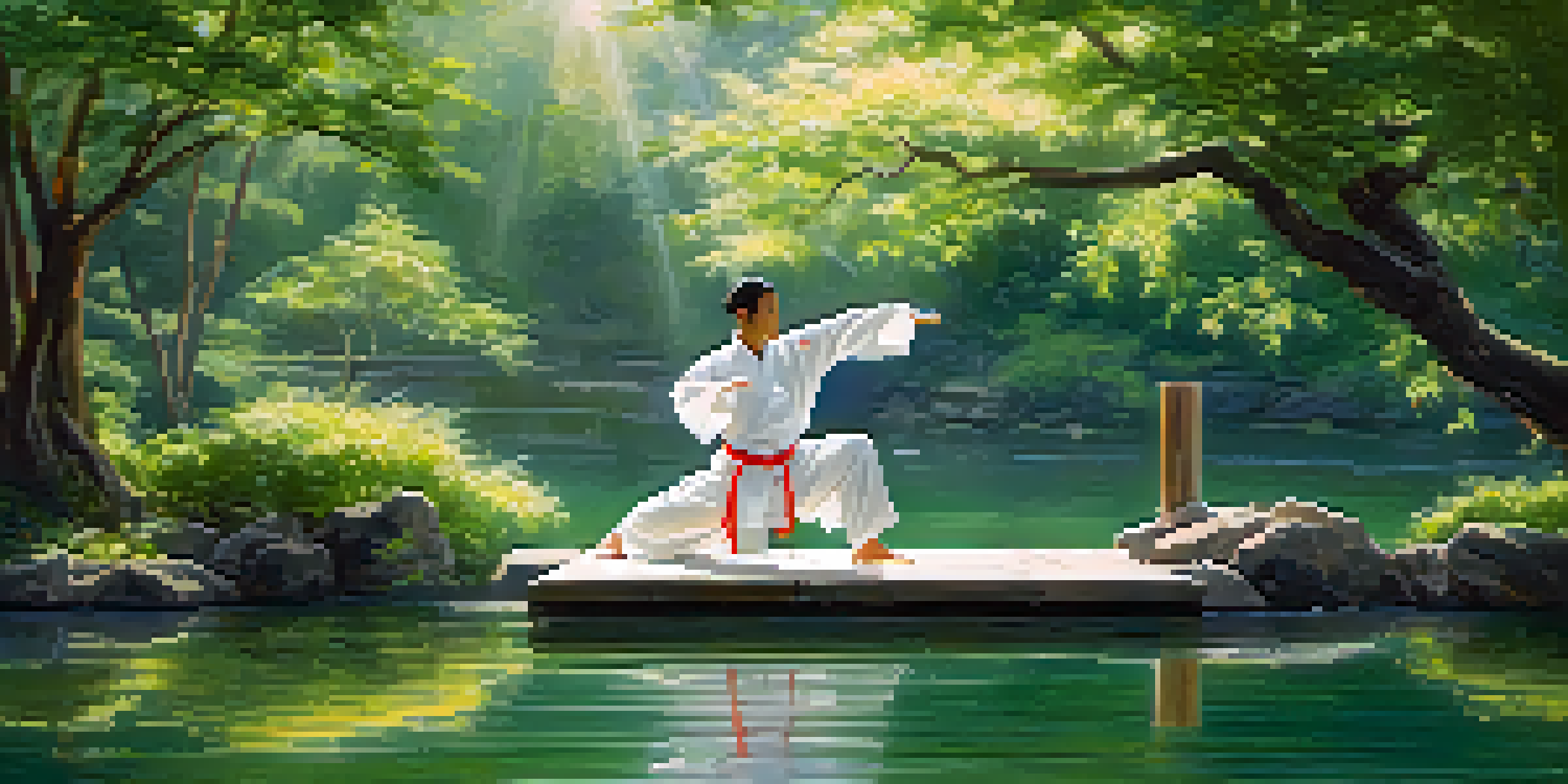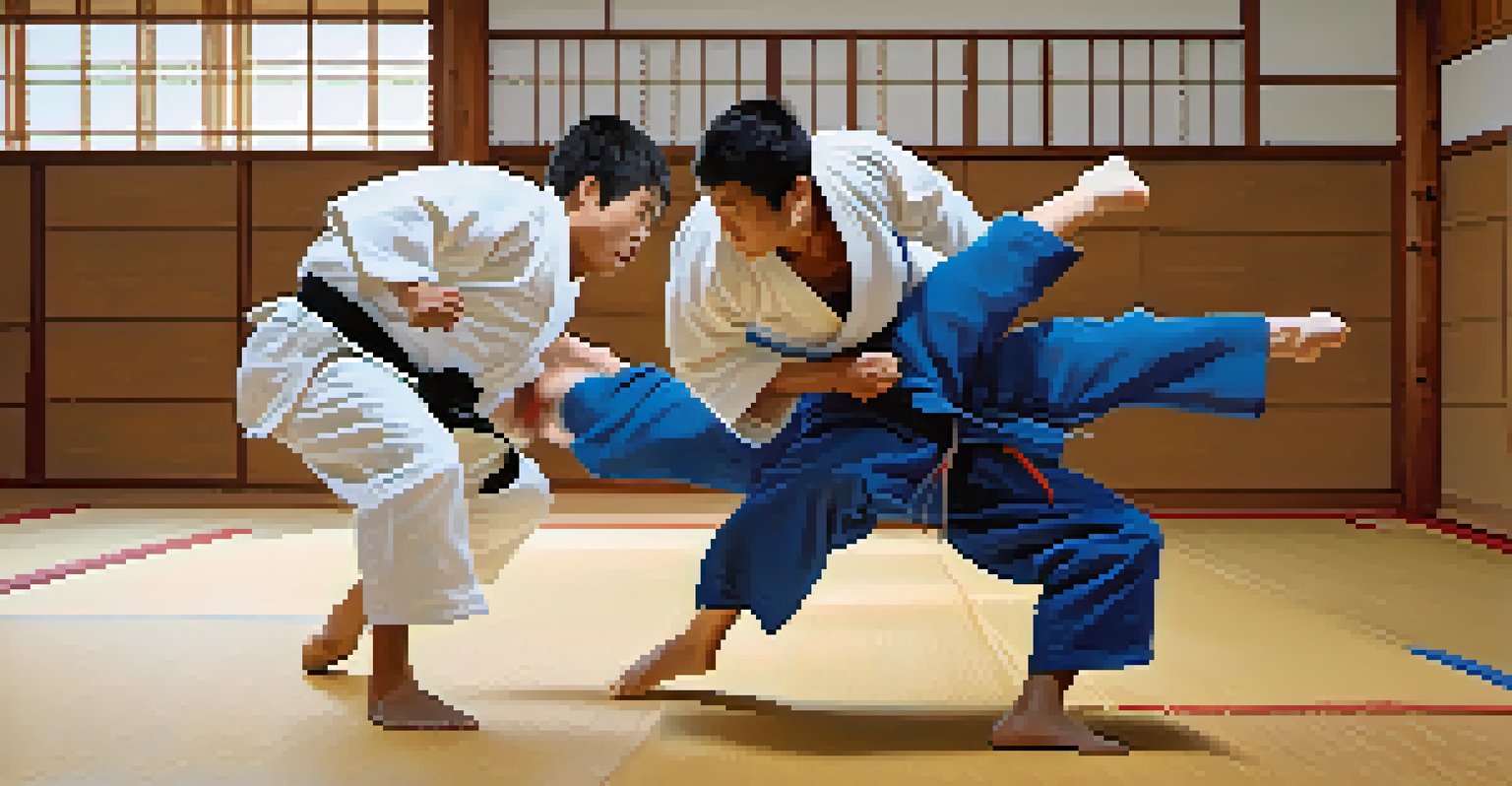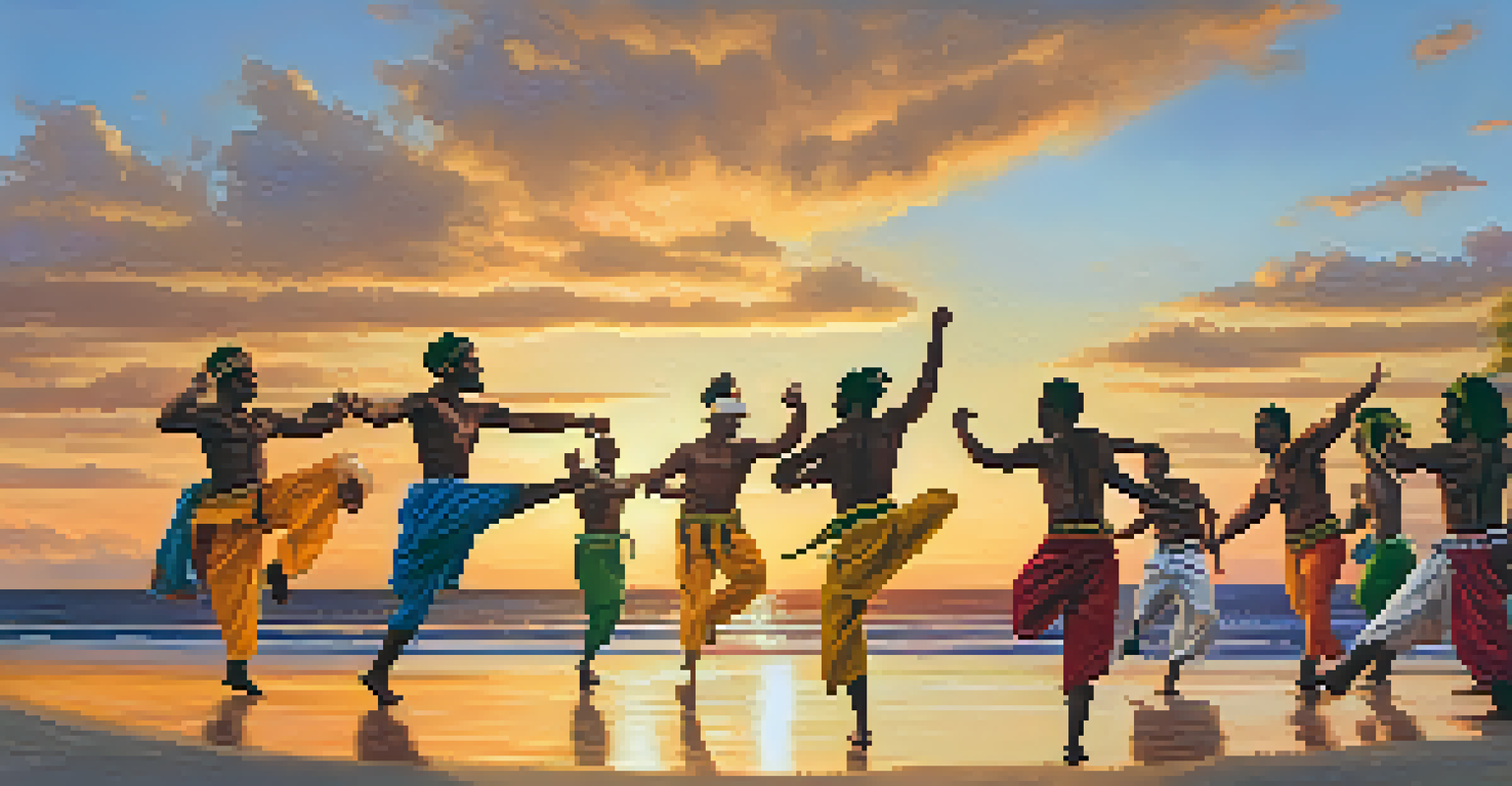Exploring the Roots of Martial Arts in Global Cultures

Understanding Martial Arts and Its Global Significance
Martial arts encompass a wide range of combat practices and traditions, often rooted in cultural philosophies. From the disciplined forms of karate in Japan to the fluid movements of capoeira in Brazil, these practices serve as more than just self-defense techniques; they are a reflection of cultural identity. Each style embodies the values and history of its region, making martial arts a fascinating lens through which to explore global cultures.
Martial arts is not about fighting; it's about building character.
At its core, martial arts is about discipline, respect, and personal growth. Practitioners not only learn physical techniques but also engage in mental and spiritual development. This holistic approach has allowed martial arts to resonate across borders, influencing various cultures and fostering a sense of community among practitioners worldwide.
As we delve deeper into the roots of martial arts, we uncover stories of resilience, tradition, and innovation. These narratives highlight how martial arts have evolved over time, adapting to societal changes while preserving their unique characteristics. Understanding these origins enriches our appreciation for the diverse forms of martial arts practiced across the globe.
The Ancient Origins of Martial Arts in Asia
Many of the earliest martial arts can be traced back to Asia, where they were often intertwined with philosophical teachings and spiritual practices. For instance, Chinese martial arts, commonly known as kung fu, have roots in ancient military training and were influenced by Confucianism, Taoism, and Buddhism. This blend of spirituality and physicality is evident in the graceful movements and meditative practices found in various kung fu styles.

Similarly, the origins of judo and karate in Japan reflect the country’s historical context, with samurai culture playing a significant role. Judo, created by Jigoro Kano in the late 19th century, emphasizes the principle of using an opponent's force against them, while karate focuses on striking techniques and discipline. Both forms highlight the Japanese values of respect, honor, and perseverance.
Martial Arts Reflect Cultural Identity
Each style of martial arts embodies the values and history of its region, serving as a fascinating lens to explore global cultures.
These martial arts not only served practical purposes but also became vehicles for cultural expression. They were practiced in temples, schools, and dojos, where students learned not just the techniques but also the rich histories and philosophies behind them. This deep-rooted connection between martial arts and culture continues to be celebrated today.
The Impact of African Traditions on Martial Arts
African martial arts have a rich history that is often overshadowed by more widely recognized styles from Asia. However, many African nations boast their own unique combat systems, such as capoeira from Brazil, which has African roots. Capoeira blends martial arts, dance, and music, representing the resilience of African culture during colonial times.
The ultimate aim of martial arts is not having to use them.
In addition to capoeira, other forms like Nguni stick fighting in South Africa and Dambe boxing in Nigeria showcase the continent's diverse martial traditions. These practices often emphasize community engagement, storytelling, and cultural preservation, making them vital components of social identity.
The influence of African martial arts can also be seen in contemporary practices, as they continue to evolve and inspire new generations. By understanding these traditions, we gain insight into the broader narrative of martial arts as a global phenomenon that transcends cultural boundaries.
Exploring European Martial Arts and Their Evolution
While many associate martial arts with Asian traditions, Europe has a rich history of combat sports as well. Historical European Martial Arts (HEMA) refers to the various fighting styles practiced throughout Europe from the Middle Ages to the Renaissance. These included swordsmanship, grappling, and unarmed combat techniques that were documented in manuals by masters like Johannes Liechtenauer.
In modern times, European martial arts have experienced a revival, with practitioners seeking to reconnect with their heritage. Styles such as fencing, kickboxing, and various forms of wrestling have evolved from these historical roots and remain popular today. This evolution illustrates how martial arts can adapt to contemporary society while retaining their historical significance.
Martial Arts Foster Personal Growth
Practicing martial arts helps individuals build confidence, discipline, and resilience while promoting a balanced and healthy lifestyle.
The resurgence of interest in HEMA reflects a broader trend of exploring one's cultural heritage. As practitioners delve into these ancient techniques, they not only learn about combat but also about the social and political contexts in which these arts developed. This exploration fosters a deeper appreciation for the diverse tapestry of martial traditions across Europe.
The Role of Martial Arts in Cultural Exchange
Martial arts have long been a vehicle for cultural exchange, allowing different societies to share their practices and philosophies. In the 20th century, globalization facilitated the spread of martial arts like karate and taekwondo beyond their origins, leading to their adoption in various parts of the world. This cross-cultural exchange has enriched the martial arts landscape, creating a melting pot of styles and techniques.
As martial arts spread, they often adapted to fit the cultural context of new regions. For example, Brazilian jiu-jitsu evolved from Japanese judo and jiu-jitsu, incorporating elements from other fighting styles and reflecting the Brazilian spirit of innovation. This adaptability showcases the dynamic nature of martial arts, as they continue to evolve while maintaining their core principles.
Cultural exchange through martial arts also fosters understanding and respect among different communities. International tournaments and competitions bring together practitioners from around the world, creating opportunities for dialogue and collaboration. These interactions highlight the unifying power of martial arts, transcending language and cultural barriers.
Martial Arts as a Means of Personal Development
Beyond physical prowess, martial arts often serve as a pathway for personal development and self-discovery. Many practitioners find that engaging in martial arts helps build confidence, discipline, and resilience. The journey of mastering a martial art is filled with challenges, and overcoming these obstacles can lead to a profound sense of achievement.
In addition to physical benefits, martial arts training often emphasizes mental focus and emotional regulation. Techniques such as meditation and breathing exercises, common in disciplines like tai chi and aikido, promote mindfulness and stress reduction. This holistic approach empowers individuals to cultivate a balanced and healthy lifestyle.
Globalization Shapes Martial Arts
The rise of digital technology has facilitated the spread and adaptation of martial arts worldwide, enriching the landscape while posing challenges to traditional practices.
Moreover, the sense of community found in martial arts dojos and training centers provides essential social support. Practitioners often form lasting friendships and bonds, which can enhance their overall well-being. This combination of personal growth and community connection makes martial arts a powerful tool for self-improvement.
The Future of Martial Arts in a Globalized World
As we look to the future, martial arts continue to evolve in response to the changing global landscape. The rise of digital technology and social media has allowed martial artists to share their techniques and philosophies with a broader audience. This newfound accessibility has led to an explosion of interest in various martial arts styles worldwide.
However, this globalization also poses challenges, as traditional practices may face dilution or misinterpretation. It is crucial for practitioners to honor the origins and philosophies of their martial arts while embracing innovation. Striking a balance between tradition and modernization will ensure the continued relevance of martial arts across cultures.

Ultimately, the future of martial arts lies in its ability to adapt while preserving its core values of respect, discipline, and community. By fostering a sense of belonging and encouraging personal growth, martial arts can continue to thrive and inspire individuals worldwide, bridging cultures and uniting people through shared passion.